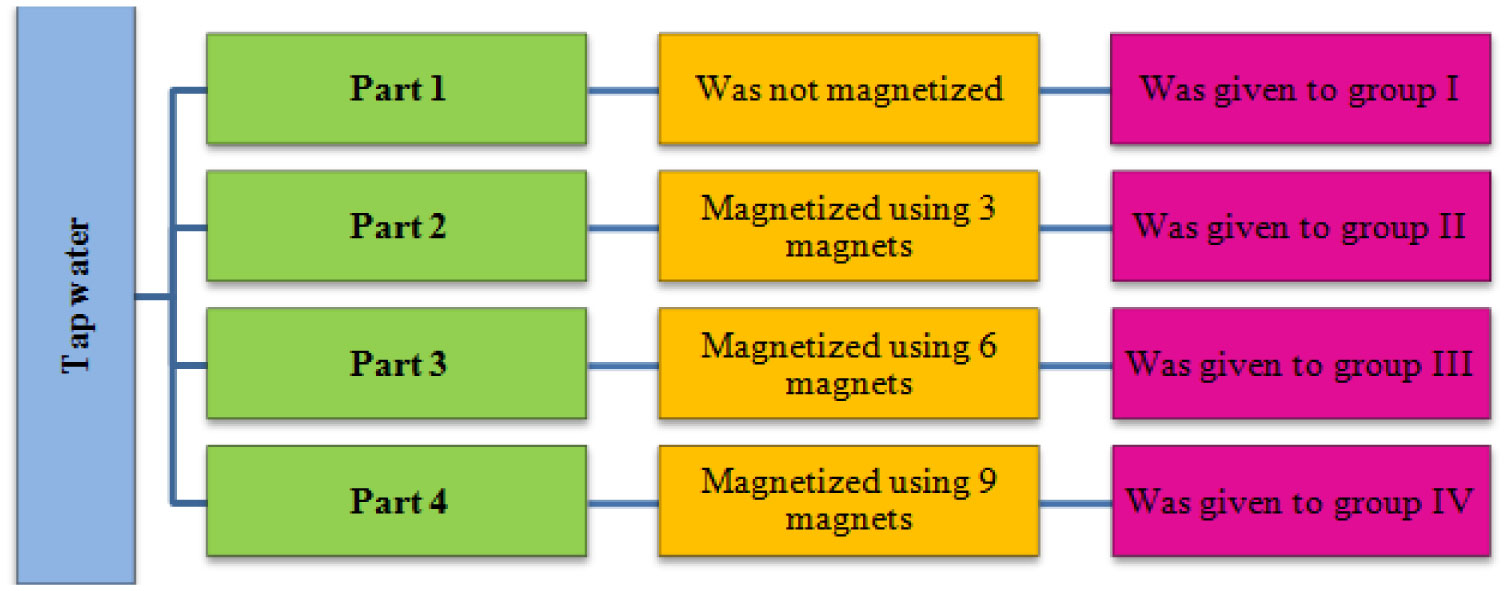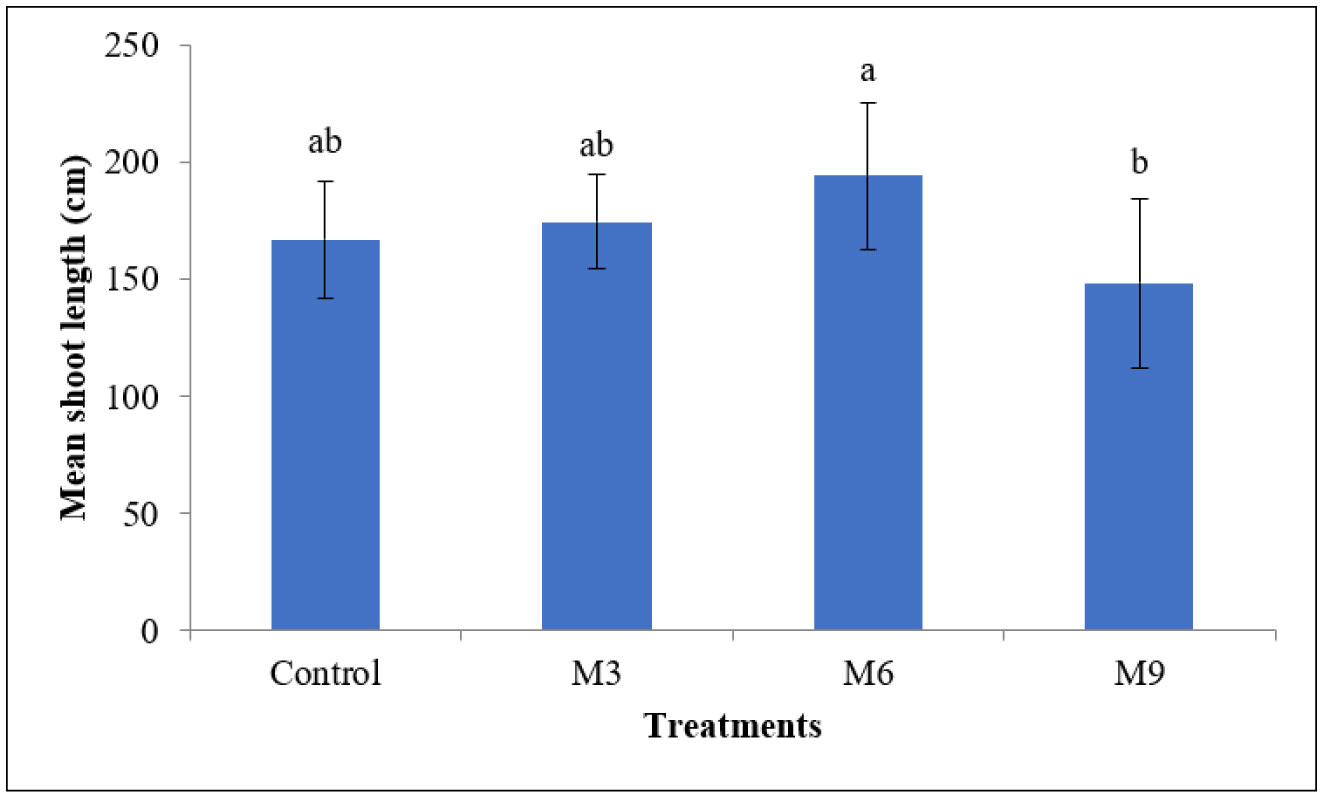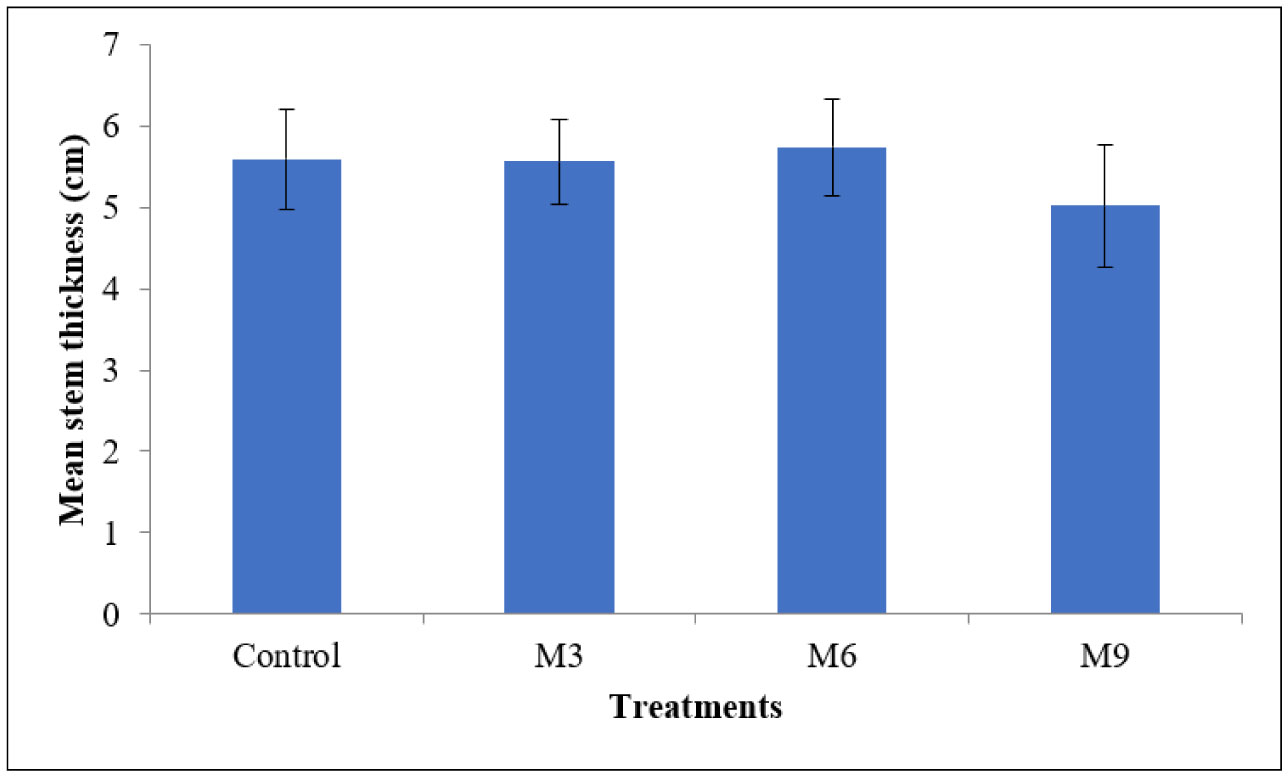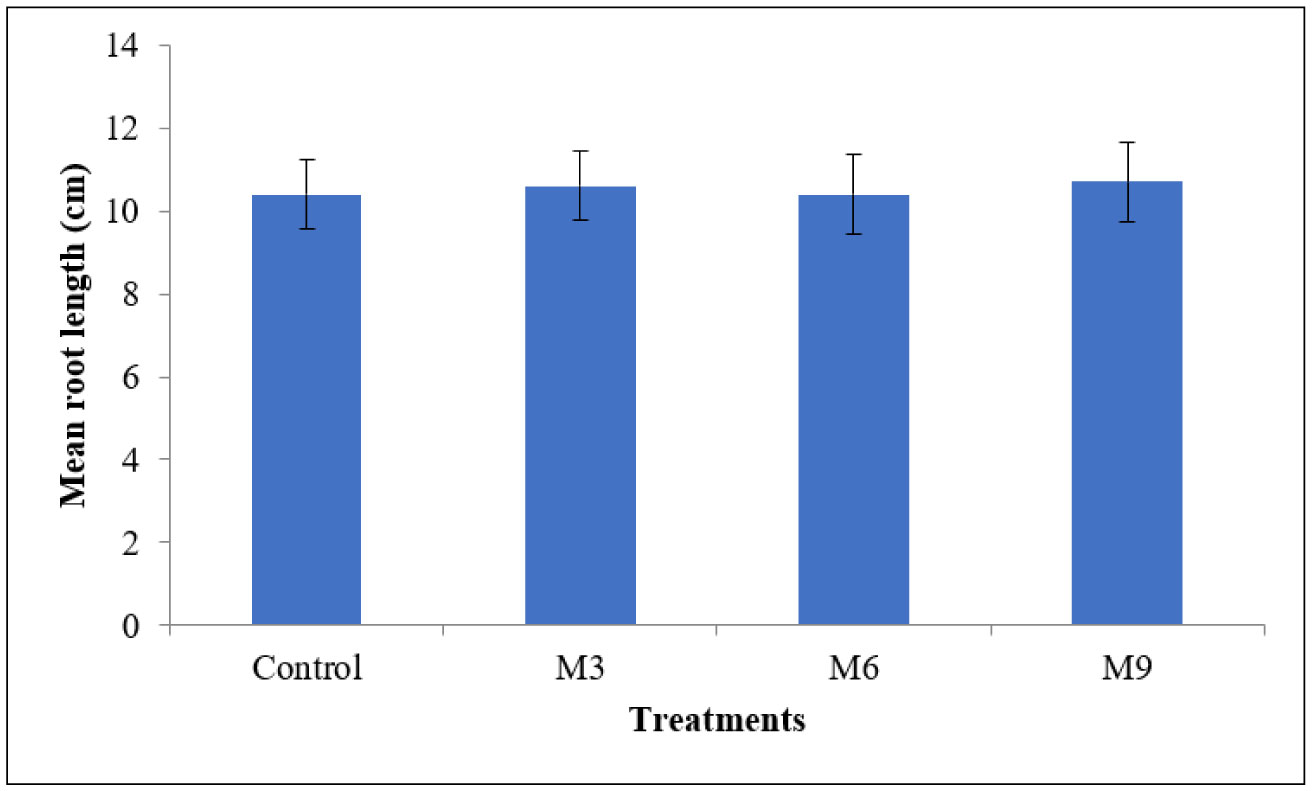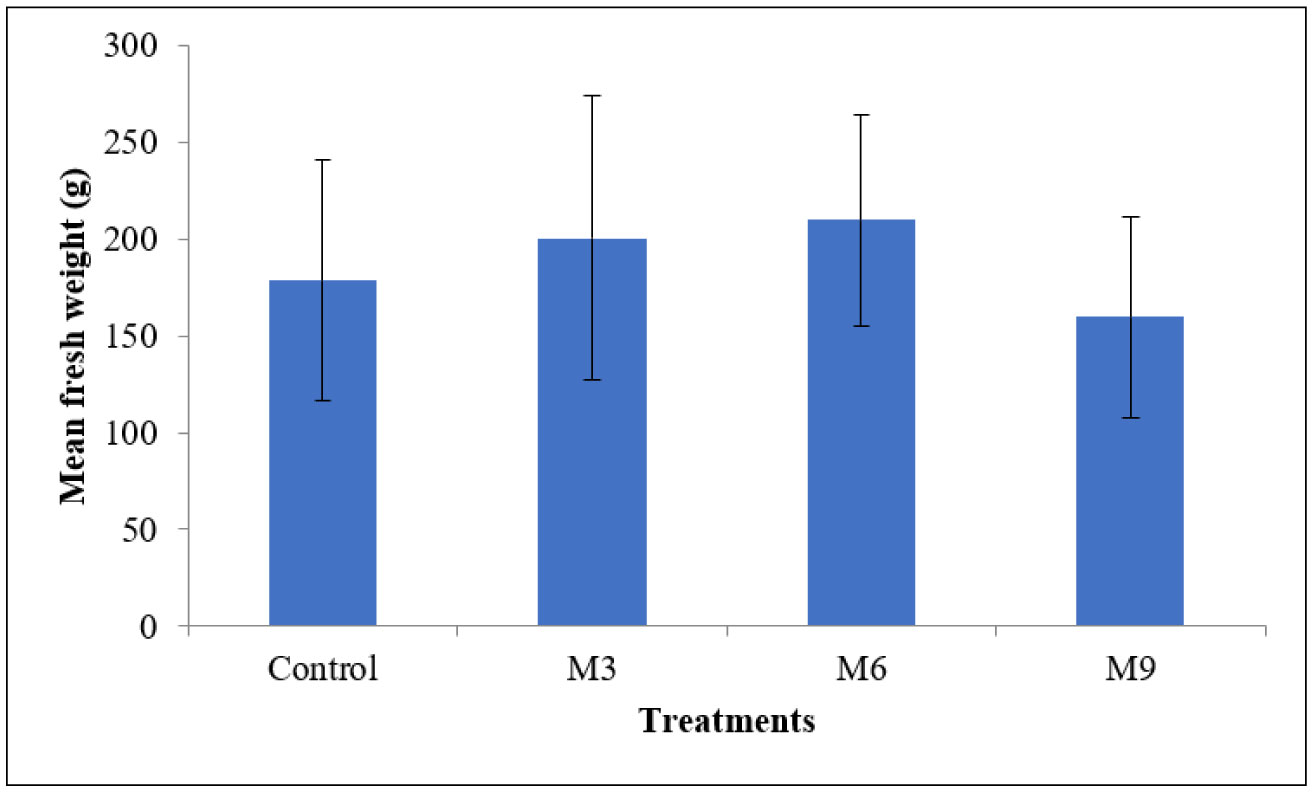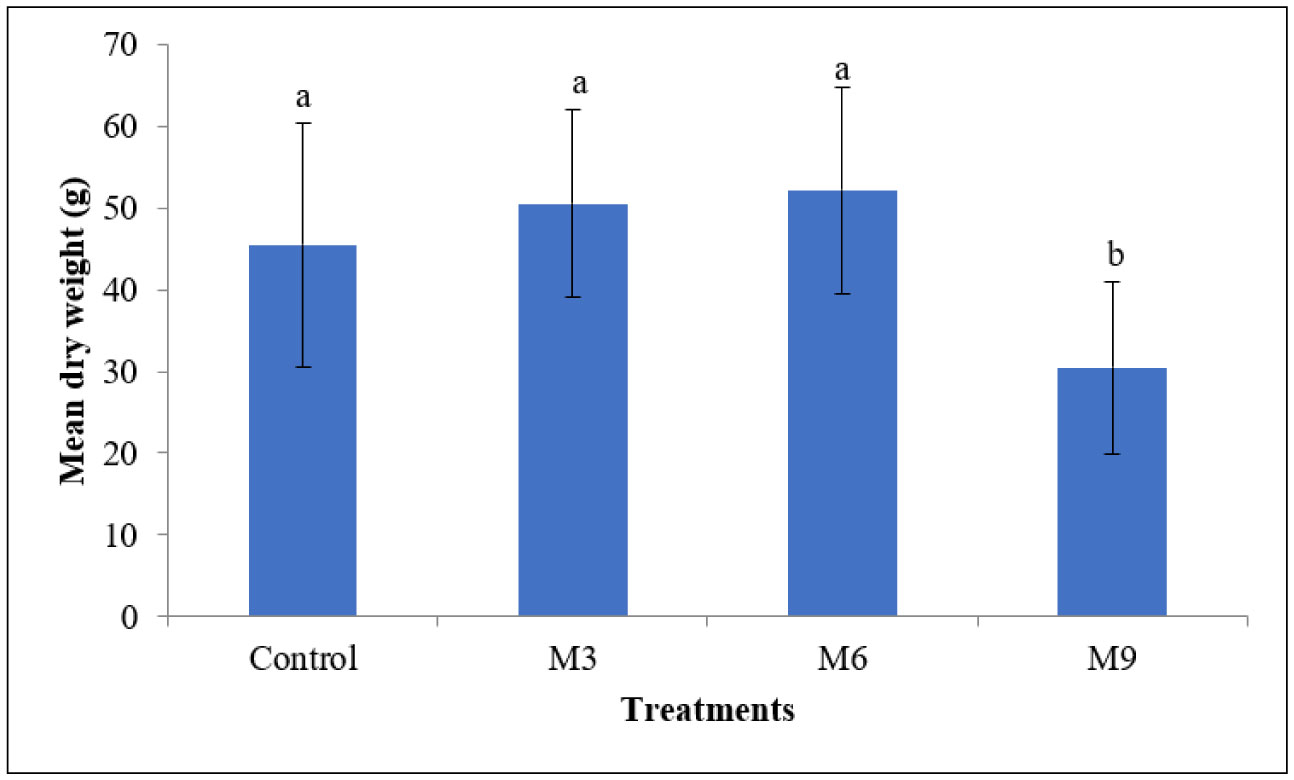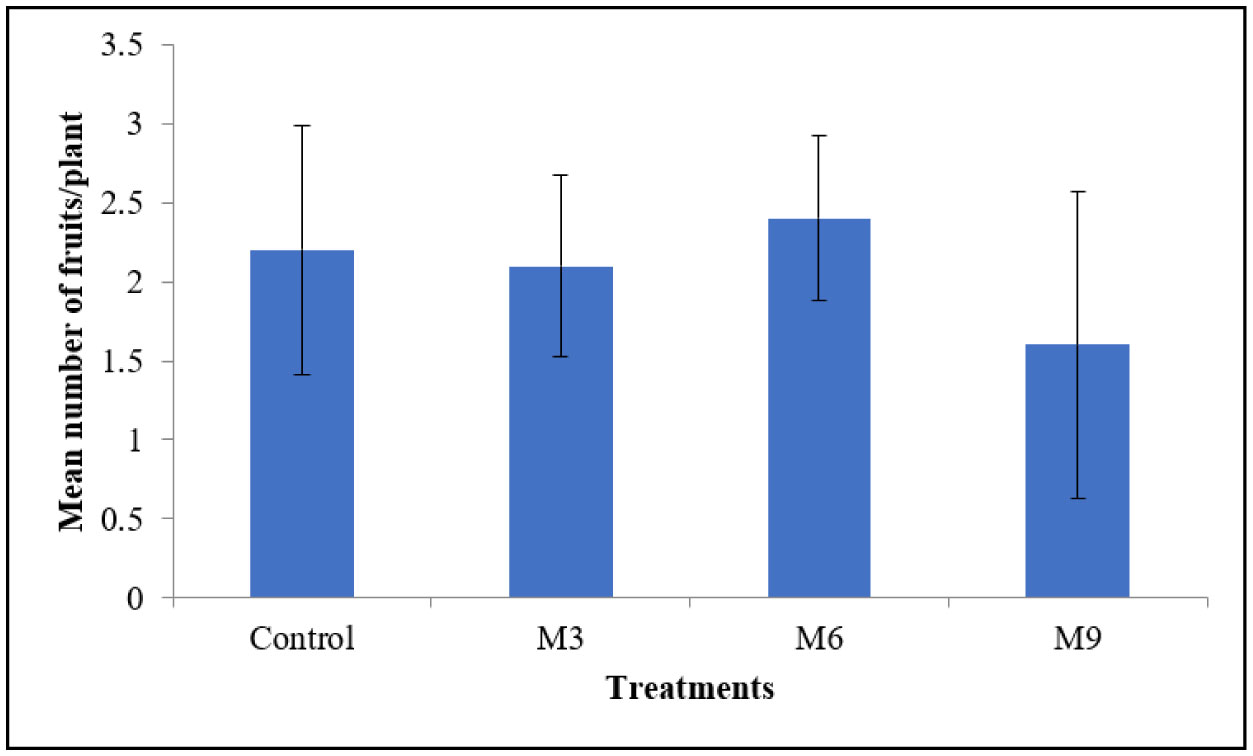1.
Introduction
Magnetically treated water, also known as water that has been treated with magnets or magnetized water, is water that has been subjected to a magnetic field of a certain strength and flow rate [1],[2]. The use of magnetized water for watering plants takes an important place in the list of non-chemical and environmentally clean methods [3]. Treated water by a magnetic field can cause alterations in the biophysical, physicochemical, chemical, and physical properties of the exposed water [4],[5]. Water can play a main function in determining the response of living materials to magnetic fields. Since water is the primary medium in which various reactions take place, it is thought that exposure to magnetic fields can alter cellular metabolism by using the body's water as a primary magnetic field receptor. The differences between magnetized and non-magnetized water have been mentioned regarding hydrogen bond formation, activation energy, conductivity, viscosity, surface tension, water molecule size, evaporation, salt mobility, dissolved oxygen as well as uniformity of its structure [6],[7].
The plants are considered the main part of ecological systems, it is affected by various environmental factors such as absence or present of magnetic fields or electromagnetic radiation, quantity, and quality of irrigation water, as well as nutrition [8]–[11]. Extensive works have been carried out concerning the response of living systems to magnetic fields [12]–[15]. The impact of magnetic fields on living systems depends on the duration of exposure, properties of exposed tissue, and the strength of the magnetic field [16],[17].
The magnetic fields affect all living beings including plants, animals and humans, as well as influence cells, tissues, organs, and whole organisms in different mechanisms [12],[18]–[20]. It has been reported that the magnetic fields affect mammals [21], birds [22], ants [23], bees [24] and even protozoa [25]. Moreover, magnetic fields have been shown to influence dipole polarization, the permeability of cell membranes, ion activity, and related functions, thus disrupting the ion concentration balance in the cell and altering the intracellular pH [26],[27].
Furthermore, The magnetic field was found to affect growth-related aspects and various functions of the plants including the growth of both shoot and root, seeds germination, different yield parameters, reproduction, productivity, contents of photosynthesis pigments, growth and development of the meristem cells, protein biosynthesis mRNA quality, enzyme activities, and gene expression [14],[28]–[31].
The previous literature review is filled with papers on the reaction of living beings to high, moderate and weak magnetic fields [32]–[35]. Although there have been many studies on the biological impacts of direct or indirect exposure to magnetic fields on living materials, the exact effect of magnetic fields is still under study [36]. Because of the importance of water in living systems, indirect magnetic field exposure of plants is of particular interest. The literature review has indicated that the influence of exposure to magnetic fields is not identical. While some papers show an inhibitory effect by the magnetic fields, others show activation, and still others no significant effects on the living systems.
Many researchers have recently investigated the impact of exposure to a magnetic field on plant growth. On the other hand, the effects of water treatment with magnetic fields on the growth and production of corn plants have received little attention. Therefore, the study presented in this paper was focused on the influence of magnetized water on the growth characteristics of corn (Zea mays) plants. This study is devoted to the impact of magnetized water on corn plants. The question of the biological activity of water after its magnetic treatment is not new, but in this study, a different method of magnetic water treatment was applied and also different magnetic flux density was used. So the present study expands the list of biological objects, including plants, that are sensitive to the harmful or stimulation effects of magnetized water. Based on the literature review which shows that magnetizing water depends on factors including the strength and number of the used magnets [37] we selected to produce magnetized water using a different number of magnets, where water treated with 3 magnets differs from water treated with 6 or 9 magnets.
2.
Materials and methods
The present study was carried out in March 2019 for 3 months at a field in East Gaza, Gaza Strip, Palestine, to investigate the effect of magnetized water on growth characteristics of corn plants. The practical part of the study consists of three stages: The first stage was designed for the magnetic system for the treatment of water. The second stage was the preparation of magnetized water by treating water samples with the magnetic field. Finally, the third stage was watering corn plants with magnetized water.
2.1. Plant material and growth condition
A total of 120 corn seeds (Zea mays) were obtained from a local farm in East Gaza. Healthy and uniform-sized corn seeds without noticeable defects, insect infection and distortion were chosen and divided into four groups in a complete randomized design (Table 1). The corn seeds were surface sterilized with a 1% sodium hypochlorite and then washed with sterile distilled water. According to agricultural specialist guidelines, the corn seeds were then correctly placed in the soil field. The corn seeds were selected due to the lack of studies that deal with the response of corn to magnetized water with a different magnetic flux density. Furthermore, they grow during the study period and farmers extensively plant it in their farms. Also, it is easy to transfer corn plants from the field to the laboratory and conduct the required analysis.
All of the remaining variables were kept constant and the growth conditions were controlled during the period of the study. Also, a constant watering time was maintained to reduce unexpected variables that affect the growth of tested plants, therefore the treatment and watering times were properly scheduled. During the experiment, corn plants were treated with 13-13-13 NPK fertilizer, which was added according to the Haifa NutriNet™ company's recommendation [38]. Table 2 illustrated the nutrient content of fertilizer. Table 1 illustrated the nutrient content of fertilizer. Throughout the present study, the plants were also treated with Roger pesticides, where all corn plants got the same amount at the same time. The tested plants were grown in the fields at the same time and given the same amount of pesticide and fertilizer. The corn plants that were examined were grown until harvested fruits.
2.2. Water treatment
Despite many devices that have been designed for the preparation of magnetized water, we preferred to design our magnetic equipment in laboratory conditions.
Normal tap water was taken and then separated into four parts. The non-magnetized water was given to the first group, whereas the remaining groups were given water treated with 3, 6, and 9 magnets respectively. The block diagram of this study explains in the flow chart as shown in Figure 1.
The system is prepared for the treatment of water samples composed of pipelines that hold the water and provide a surface that magnets can touch it. Four pipes and 18 Nickel-plated neodymium magnets were used for this system. We selected polyvinyl chloride (PVC) pipes with a 16 mm diameter and a 270 mm length. The magnets used in this study had an ellipse shape (30 mm length x 15 mm diameter) with a magnetic flux density of 70 mT. The diameter of the pipes was slightly greater than the magnets to prevent moving the magnets and maintain them in the same place. All magnets were identical and have the same size, shape, and strength. Neodymium magnets are preferable due to their remarkable strength and easy accessibility.
For the first pipe, which corresponds to the control group of the experiment, no magnets are used. For all of the other groups that have magnets, the pipes with magnets were built up correctly. The second pipe was fitted with 3 magnets. The third and fourth pipes were fitted with 6 and 9 magnets respectively. The magnets are stuck on the inner sides of the pipes. The preparation of Bi-Polar water was done by placing high powered magnets side-by-side at a distance of at least (5–10 mm) apart. The polarity of the magnets was taken into consideration, where the south and north poles of the magnets on the treatment pipe seat were alternated. This procedure is necessary to ensure that opposite poles face each other and create the desired magnetic field between the two poles and thus, effectively treat water by the magnetic field [34]. The magnets were placed at the end which is nearest to the plant at a distance of 100 mm. After all, the pipe was ready, they were placed in the field with the same containers to water the plants.
2.3. Data recorded
At the end of the study period, shoot length, fresh and dry weight, stem thickness, and the number of fruit/plant were recorded. The length and thickness of the grown plants were carefully recorded using a ruler and capillary, respectively. These parameters were chosen because they indicate the status of the growth of corn plants under the tested growth condition. The investigated parameters are good indicators for interpreting the changes caused by directly or indirectly exposed to magnetized water. Fresh weights of corn plants were measured at the end of the study period. They were then dried for 48 hours at 60 °C in an oven, and their dried weight was also recorded.
2.4. Data analysis
The SPSS computer program version 22.0 for Windows was used to analyze the data. The information was presented as mean ± standard deviation. One-way analysis of variance (ANOVA) was used to compare the means of four treatments, followed by the Tukey test for pairwise comparisons. A P-value of 0.05 or less was considered statistically significant.
3.
Results and discussion
The impacts of magnetized water were examined by the growth characteristics of corn plants. The findings revealed that magnetized water changed the growth of treated plants during the whole time of research duration. The overall results are presented in Table 3.
3.1. Effect of magnetized water on plant length
The results revealed that the length of corn plants is significantly influenced by magnetized water (Figure 2). An increase in the growth of corn plants was observed after watering with magnetized water. Corn plants watered with magnetized water also matured rapidly and had a higher length of shoot than that of control. Among four treatments, plants in the M6 group recorded the higher plant length (194.10 ± 31.05 cm) and the lowest was recorded in the M9 group (148.40 ± 36.19 cm) (Table 3).
This result was in accordance with the result of Alattar et al. [1], they conducted extensive work to identify the effect of magnetized water on the general growth of corn plants. The magnetized water was prepared by passing normal water through the magnetization device at a relatively low speed. The water was re-passed through the funnel only 7 times. The magnetization device consists of a permanent hard disk magnet (125 mT) affixed to the exterior surface of the funnel. They found out that corn seedlings irrigated with magnetized water got taller than seedlings irrigated with tap water. Similar enhancing impact of magnetized water on plants length were also reported on pepper [40], cucumber [17], barley [41], garden pea [42], soybean [43],[44], Tomato [45],[46], chickpea [47], and cowpea [48].
In contrast, different results have been reported previously in wheat (Triticum aestivum) cultivars: Sakha 93, Masr 1 [49] and NR-234 [50]. They pointed out that magnetized water decreased the shoot length of treated plants.
The stimulating effect of magnetized water on the growth of corn plants may be due to its impact on the biochemical process, activities of enzymes and protein formation. It was suggested that the magnetic field promotes root development and plant growth. These changes may be because the magnetic field interacting with ionic fluxes across the cell membrane causing changes in the mechanism of water uptake, ionic concentrations and osmotic pressure [51],[52]. The magnetic field could exert an influence on the soil/water interface causing gas bubbles (air) to destabilize and disrupt the ionic equilibrium between the shell of absorbed ions and counter ions [53].
3.2. Effect of magnetized water on stem thickness
The results of this study revealed that stem thickness (diameter) was not influenced when treating corn plants with magnetized water when compared with corn plants treated with non-magnetized water (Figure 3). The stem thickness when using non-magnetized water was 5.59 ± 0.62 cm. Stem thickness when using 3, 6, and 9 magnets were 5.56 ± 0.51 cm, 5.74 ± 0.59 cm, and 5.02 ± 0.75 cm, respectively (Table 3). Analysis of the results showed no significant difference was found between the four treatments.
This result was in agreement with the result obtained in another crop, where magnetized water did not change the stem thickness of treated plants. In the study of Osman et al. [54], they evaluated the influence of saline magnetic water on the growth and mineral contents of pear seedlings. They found that the stem diameter didn't affect significantly the watering of magnetized water.
On the other hand, this result disagreed with the results reported in the previous studies, which found a positive or negative effect of magnetized water on the stem thickness of corn plants. For example, Alattar et al. [1] noticed that magnetized water increased the thickness of corn plants' stems. Different results were also recorded by Jogi et al. [55], they found that mustard plants treated with magnetized water exhibited highly significant increases in stem diameter as a comparison to those in the non-magnetized group. In the study of Yusuf and Ogunlela [56],[57], they found that tomato plants exposed to magnetized water had a bigger stem diameter than plants watered with normal water.
The no-effect in vegetative parameters including stem thickness in plants watered with magnetized water may be referred to as not change in the amount of photosynthetic pigments concentrations (carotenoids and chlorophyll) as well as protein biosynthesis that provided the required amount of assimilates for plant growth. This resulted in the stem diameter of corn plants being unaffected which indirectly treated by the magnetic field. As a result, the stem diameter of corn plants was unaffected by the magnetic field, which was treated indirectly. The magnetic field has been shown to alter the transport properties of cellular membranes, which play a necessary role in controlling the assimilation of nutrients required for the cell's function [58].
3.3. Effect of magnetized water on root length
The findings revealed that using magnetized water did not affect the root length of the treated plant (Figure 4). At the end of the study, the root length when using non-magnetized water was 10.40 ± 0.84 cm. Root length when using 3, 6, and 9 magnets were 10.60 ± 0.84 cm, 10.40 ± 0.97 cm, and 10.70 ± 0.95 cm, respectively (Table 3). Analysis of the results showed that the differences between the four treatments were not statistically significant.
This result was in accordance with that stated by Nasher [59], they investigated how magnetized water affected the growth of Chick-Pea seeds. They concluded that the magnetized water did not affect on root time.
In the contrast, in the study of Almaghrabi and Elbeshehy [49], they carried out a study to investigate the effect of magnetic field on the germination of grain and growth of wheat (Triticum aestivum L.) seedlings. Grains of wheat different cultivars were dipped in magnetic water subjected to magnetic fields (0.3T) for 30 min. They found out that magnetized water improved the root length of some cultivars (Giza168, Seds 12, Tabouki, Kaseemi, Yamanei, Madini, Nagrani), and also did not affect the root length of other cultivars (Sakha 93 and Masr 1). In the study of Ijaz et al. [50], they documented that magnetized water decreased the root length of wheat (Triticum sp.) cultivar NR-234.
3.4. Effect of magnetized water on dry and fresh weight
The results showed that magnetized water has no significant impact on the fresh weight of corn plants (Figure 5). On the contrary, the results revealed that magnetized water has a significant impact on the dry weight of corn plants (Figure 6). The magnetized water increased the dry weight of corn plants as compared with plants in the non-magnetized group. The corn plants in the M6 group recorded the highest in dry weight, whereas those in the M9 group were the lowest. Analysis of the results revealed that the difference observed between the corn plants treated with normal water and those treated with magnetized water was significant (Table 3).
The positive effect of the magnetic field on dry weight was reported by many researchers [17],[60]–[62]. It has been suggested that enhanced growth including increased plant biomass under the magnetic field treatment would impact the biochemical process (transport of assimilates, free radicals formation, the activity of proteins and enzyme, water and ions absorption and growth regulator,) which lead to regulate and change the pattern of plant growth and biomass [44],[63].
3.5. Effect of magnetized water on the number of fruits per plants
The findings revealed that the number of produced fruits yield was not influenced by magnetized water (Figure 7), where the difference between the four treatments was not significant (Table 3).
This finding disagreed with the finding reported in the studies of Çelik et al. [64], Aladjadjiyan [51] and Ahmad et al. [64], they found out that magnetized water increased the yield and yield parameters of treated plants. Also, in the study of Eşitken and Turan [65], they showed that the use of magnetic fields increased the total fruit number of treated plants. More recently, Alattar et al. [66] found that pepper fruit yield was significantly influenced by magnetized water, where the plants in the M6 group produced the greatest number of fruits per plant.
It was reported that exposure to the magnetic field increasing the mobility of ions as well as improve ions uptake resulting in the change of enzyme activities, and then results in better development of photosynthesis stimulation and thus increased the total number of fruits as well as improved their quality [67]. In light of the results of this study, the reasons standing behind unchanged fruit yields when watering plants with magnetized water may be attributed to the magnetized water did not change the mobility of ions and ions uptake which causes unchanged inactivity of enzymes and photosynthesis in treated plants.
4.
Conclusions
The current work was carried out to identify the effect of magnetized water on some growth characteristics of corn plants. The results showed that the magnetized water influenced corn plants growth rate and morphology. Treating corn plants with magnetized water significantly changes some growth parameters such as shoot length and dry weight. The findings revealed that magnetized water has a significant impact on the length of corn plants. Corn plants that were watered with magnetized water matured faster and had longer shoots than those of non-magnetized water. Magnetized water significantly increased the dry weight of corn plants as compared with those in the non-magnetized group. On the other hand, stem thickness, root length, and fresh weight were not significantly affected by magnetized water. The influence of magnetized water depends on the number of magnets used to magnetizing water. So as a clean and safe method, watering with magnetized water can be used to improve the growth parameters of the exposed plant. So as a clean and safe method, watering with magnetized water can be used to improve the growth parameters of the exposed plant.









 DownLoad:
DownLoad:
